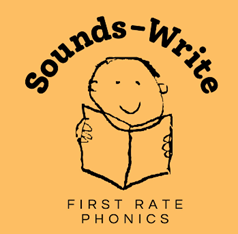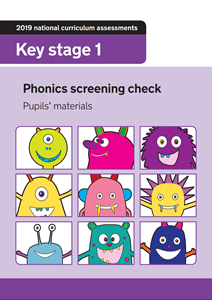Early Reading and Phonics
PHONICS AND EARLY READING
Reading is at the heart of everything we do at Belgrave, and we believe it is essential children start off with the right building blocks.

At Belgrave we use the ‘Sounds-Write’ programme as our new approach to teaching our children in EYFS and Key Stage 1 to read, spell and write.
Sounds-Write is effective in teaching pupils to read, spell and write because it starts from what all children know from a very early age – the sounds of their own language. From there, it takes them in carefully sequenced, incremental steps and teaches them how each of the 44 sounds in the English language can be spelt.
Find the video and leaflet below which will share with you more about Sounds-Write.
https://sounds-write.co.uk/wp-content/uploads/2023/03/Sounds-Write-at-Plain-Talk-2023.pdf
Children in their daily phonics sessions are taught conceptual knowledge and skills that enable them to say the sounds and read the words.
The programme begins by teaching an 'Initial Code'. During this phase, the children learn that:
- sounds can be represented by spellings with one letter, e.g. c-a-t
- some spellings are written with a double consonant, e.g. b-e-ll
- some spellings are written with two different letters, e.g. sh-o-p
Once the children are confident with applying this understanding in their reading and spelling, they move onto the 'Extended Code' at the start of Year 1. During this phase, the children learn:
- a spelling can represent more than one sound
- the most common sounds represented by the target spelling
- how to manipulate alternative sounds in and out of words
The Extended Code lasts throughout Year 1 and Year 2 and the skills they learn will continue to be applied in their reading and spelling well beyond this time. Throughout the programme, close links are made between reading and spelling.
Sounds Write teaches children:
- Letters are symbols (spellings) that represent sounds
- Each sound may be represented (spelled) by a 1, 2, 3 or 4 letter spelling, e.g. c-a-t, f-i-sh, n-igh-t, w-eigh-t)
- The same sound can be spelled in more than one way, e.g. goat, slow, note, toe, over
- Many spellings represent more than one sound, e.g. ea in seat, break and bread
The following skills are taught throughout the Sounds Write programme:
- Segmenting - the ability to pull apart the individual sounds in words (pig = p-i-g)
- Blending - the ability to push sounds together to build words (c-a-t = cat)
- Phoneme manipulation - the ability to insert sounds into words and remove sounds out of words. This skill is necessary to test out alternatives for spellings that represent more than one sound.
Sounds-Write provides opportunities for practising these skills on an everyday basis until pupils achieve the automaticity required for fluent reading and spelling.
 Phonics Books
Phonics Books
In EYFS and KS1 children bring home books from school and these books have been produced by Sounds-Write, Dandelion Launchers and Dandelion Readers. When read daily, these books help to consolidate and maximise the children’s understanding of phonics. These books are fully decodable texts that build on the knowledge or ‘code’ that is being taught during Sounds-Write phonics lessons. We also use them in our guided and shared reading.
In EYFS, you should expect to receive your child’s first decodable reading book around October half term. This is to allow the children to have a secure understanding of the code in the book. We do not give children books to read at home where they are faced with something they don’t know.
We teach each ‘code’ in Reception and KS1 for 2 weeks. Once the new code has been taught, a reading book will be sent home so that your child can practise reading it. It is a very good thing if your child reads their book with confidence. This means they have remembered the new code they have been taught at school. It does not mean it is ‘too easy’.
As your child goes through KS1 (years 1 and 2) you should expect to see a wider variety of books coming home for your child to read to develop their confidence and fluency (recognising words without saying the sounds and reading the words)
We also believe that children need exposure to high-quality, rich texts to develop a love of reading and this is something that we want to promote at Belgrave. Children have access to class libraries and our school library which are made up of collections of different books, for example:
- Story books
- Picture books
- Traditional tales
- Topic related books
- Poetry books
The children in EYFS and KS1 are also able to choose and take a library book home every weekend to share with their family and friends. The library books expose the children to a wide variety of topics and text types (fiction and non-fiction). They are aimed at providing enriched reading experiences that promote a love of reading.
Phonics Check
 In Year 1 the children sit a Phonics Screening Check in June. https://www.gov.uk/government/publications/phonics-screening-check-information-for-parents
In Year 1 the children sit a Phonics Screening Check in June. https://www.gov.uk/government/publications/phonics-screening-check-information-for-parents
Working one to one with a familiar adult, the children will read 40 words, some of which are real and some of which are pseudo (made up/alien words) containing the 40+ phonemes they have learned during their first two years in school. The pass mark is usually around 32 and children who do not reach this standard will receive extra phonics support in Year 2 and the screening at the end of the following year.
The 40 words are divided into two sections – one with simple word structures of three or four letters and one with more complex word structures of five or six letters. The teacher administering the check with your child will give them a few practice words to read first – including some pseudo words – so they understand what they need to do. Each of the pseudo words is presented with a picture of an alien, as if the word were their name (and so your child doesn’t try to turn it into a real word because it doesn’t make sense!).
How Can You Support Early Reading At Home?
 Reading every day at home has the biggest impact on your child’s learning and progress.
Reading every day at home has the biggest impact on your child’s learning and progress.
“It’s never too early to read stories with your child and spending just ten minutes every day enjoying books together can make a BIG difference to their development. Sharing stories boosts creativity and imagination, improves wellbeing, is a positive experience for parents, carers, guardians, grandparents – everyone! – and is great fun!”
From the World Book Day website
- Remember to fill in your child's reading record every time you read together. Please read with your child at least 4 times a week.
- Download the Sounds Write app on your iPad (if you have one) for your child to play at home. More information can be found via the link here: https://sounds-write.co.uk/ipad-app/
- Use letter sounds rather than letter names with your children at home. This will avoid confusion for the children and will reinforce the learning at school.
- Avoid adding an extra vowel when pronouncing letter sounds, e.g. ‘buh’ ‘duh’. Please see this short video which shows the correct sound pronunciations: https://www.youtube.com/watch?v=a8ZMfYjdN-sCorrect Sounds
- When listening to your child read, encourage them to have a go at unfamiliar words by encouraging them to “say the sounds and read the word”.
- Visit the Sounds-Write website for further information, support and resources: https://sounds-write.co.uk/support-for-parents-and-carers/
- There is a free online course that is aimed specifically at parents and carers and will further your understanding of the Sounds-Write program and teaching. You can find the course by going to: https://www.udemy.com/help-your-child-to-read-and-write/
- If you have any questions regarding phonics please contact your child’s class teacher who will be more than willing to help support early reading at any time!